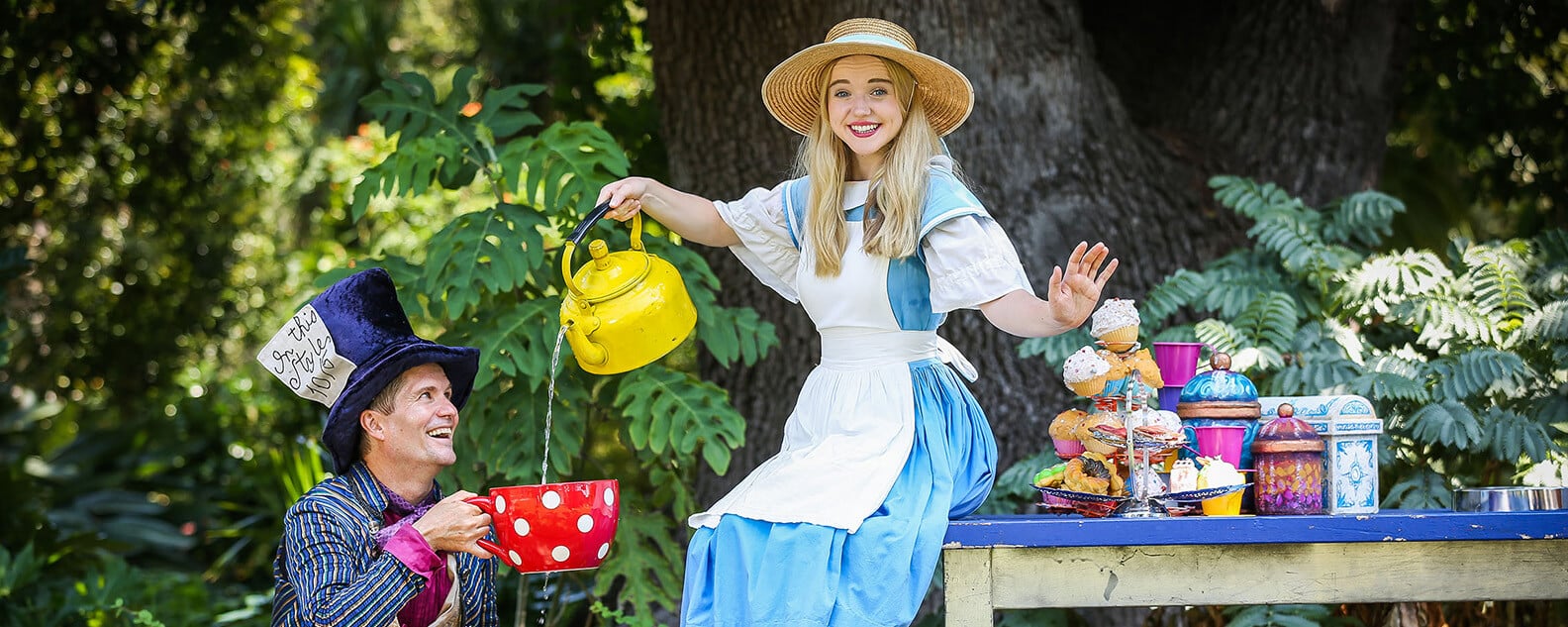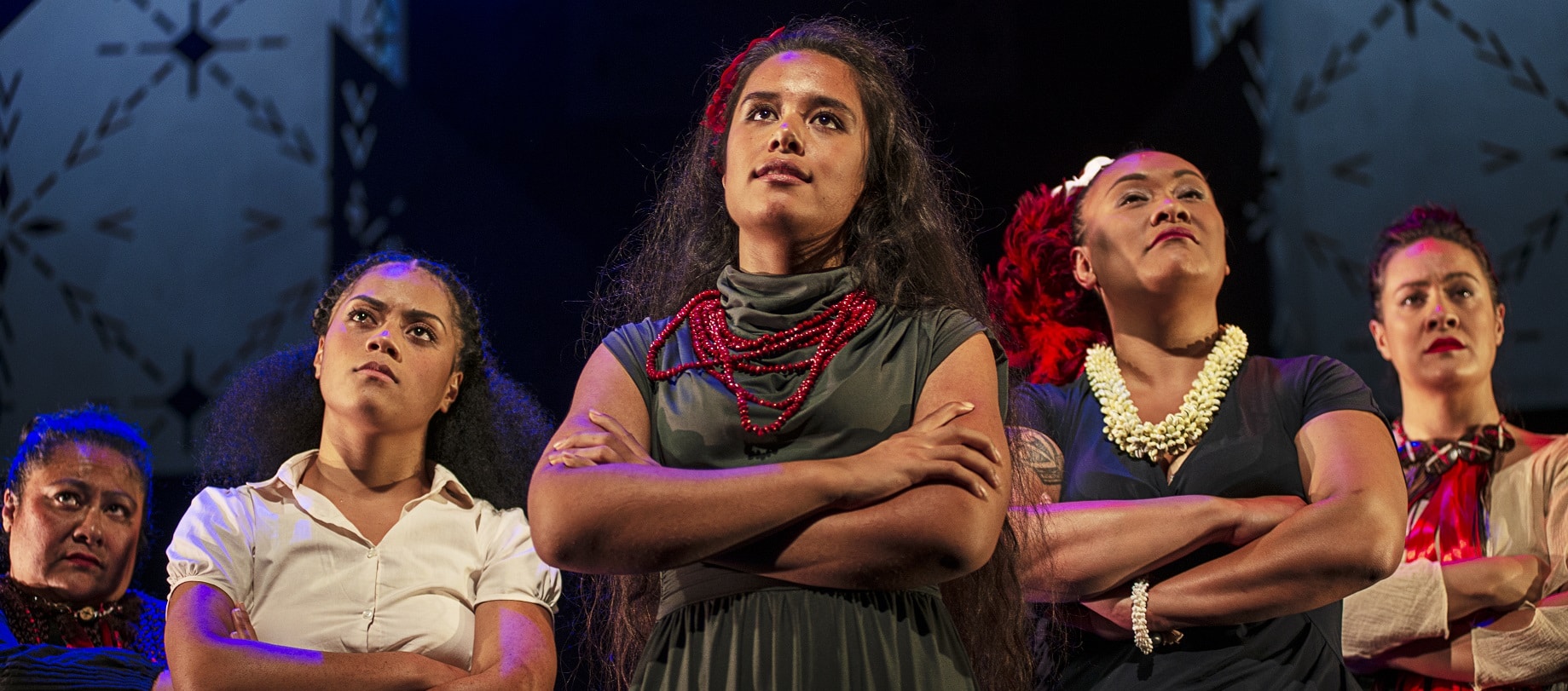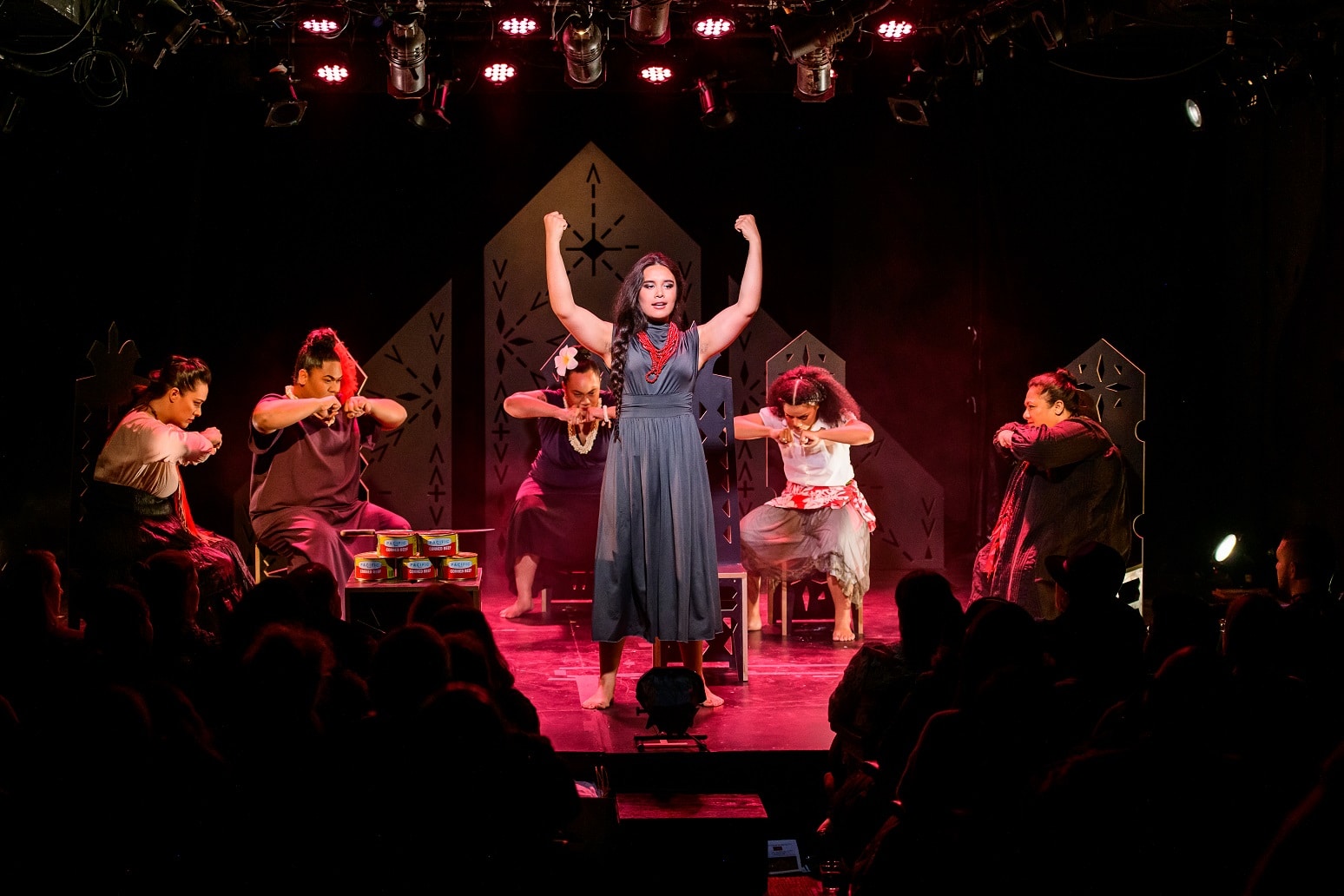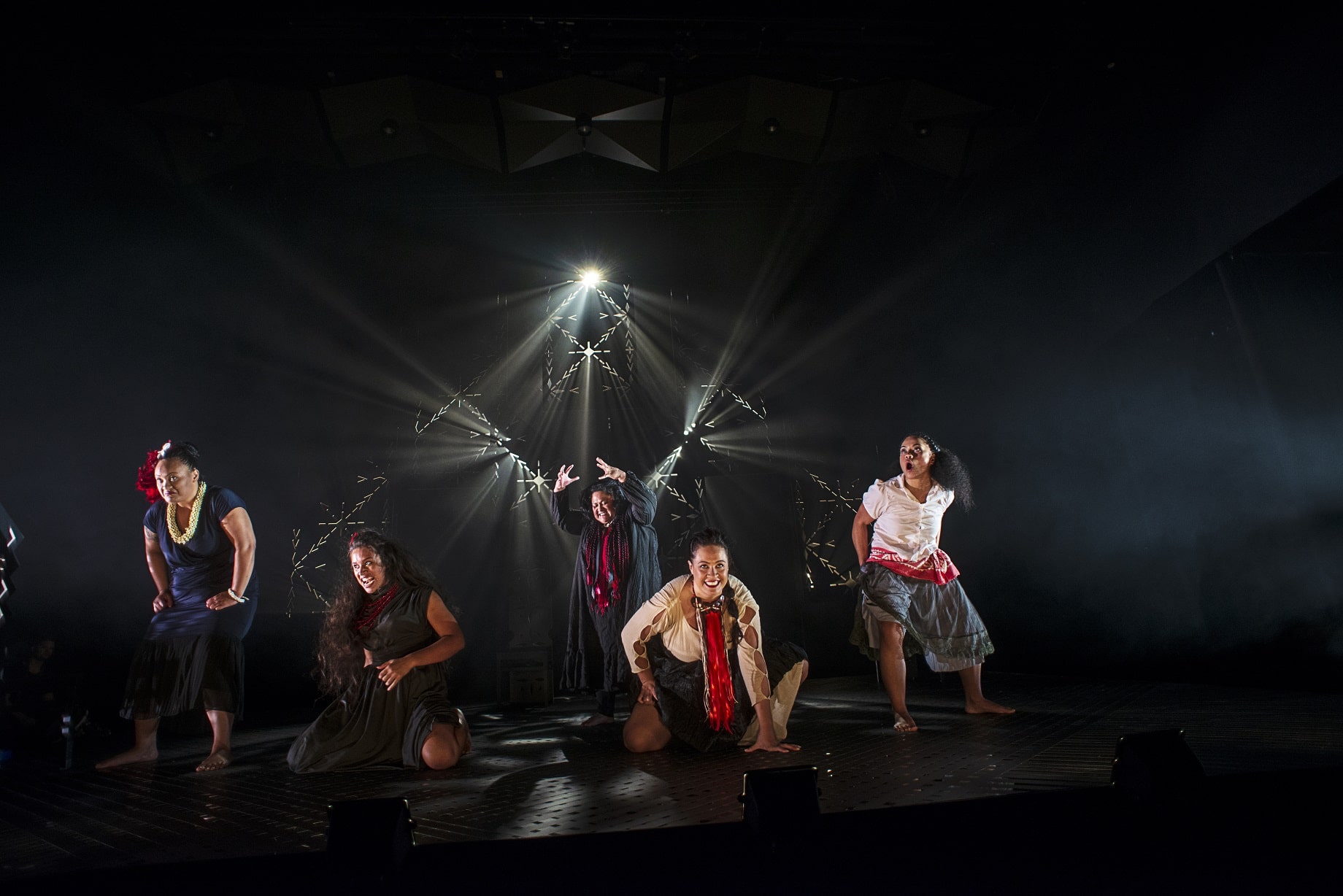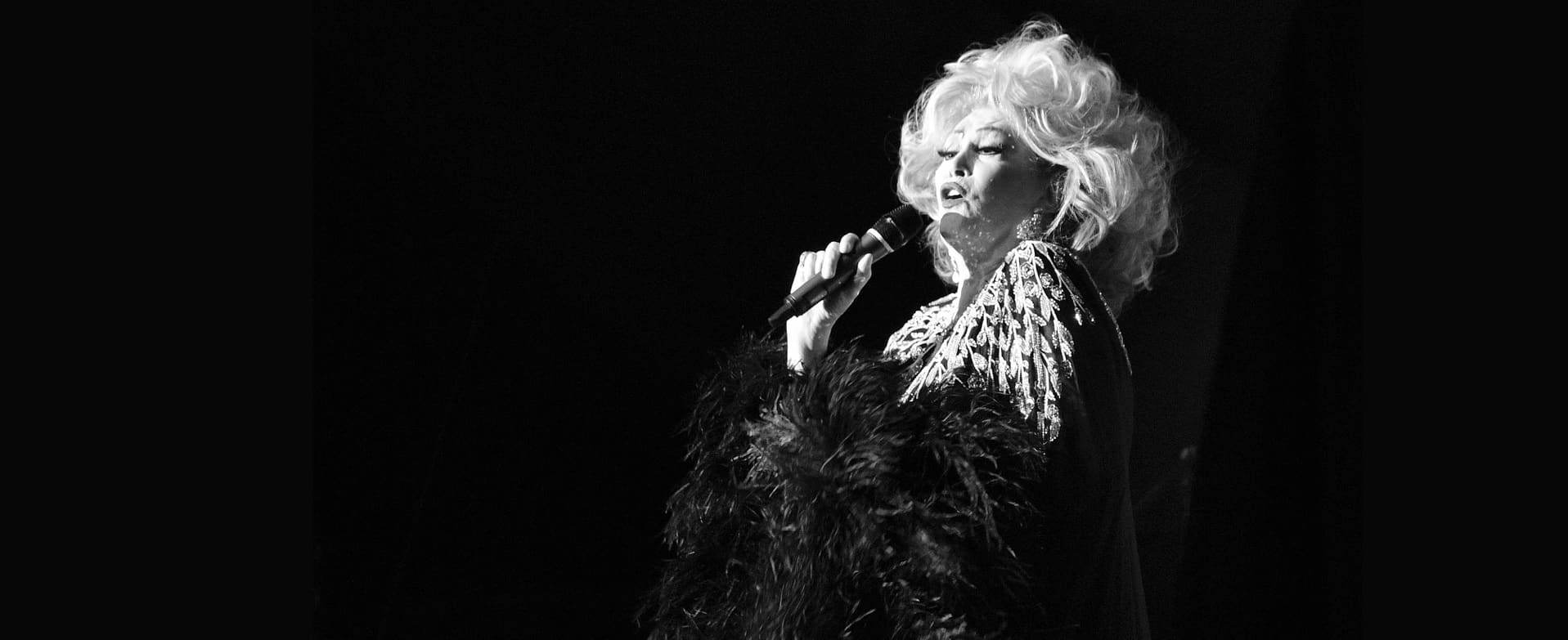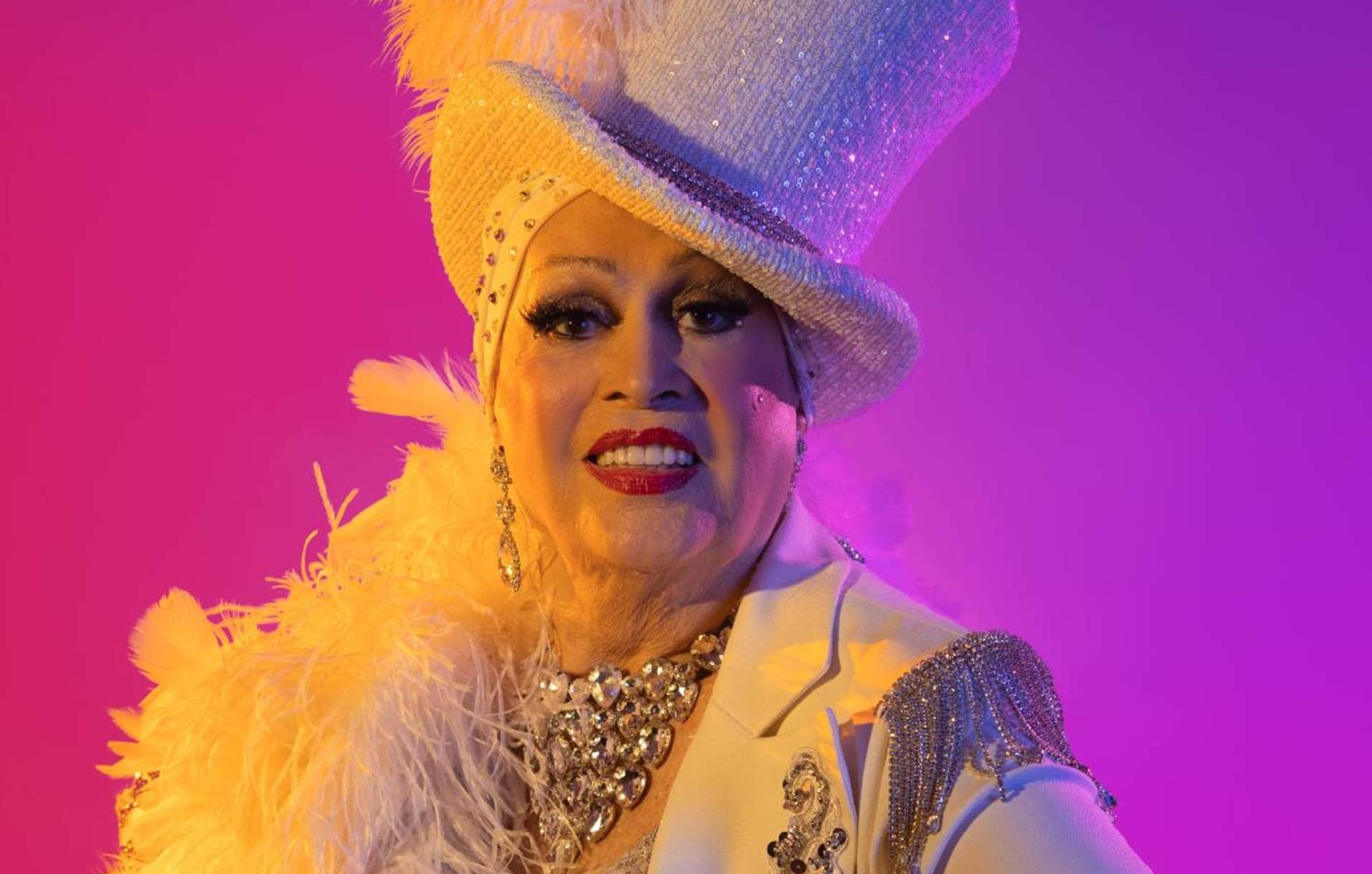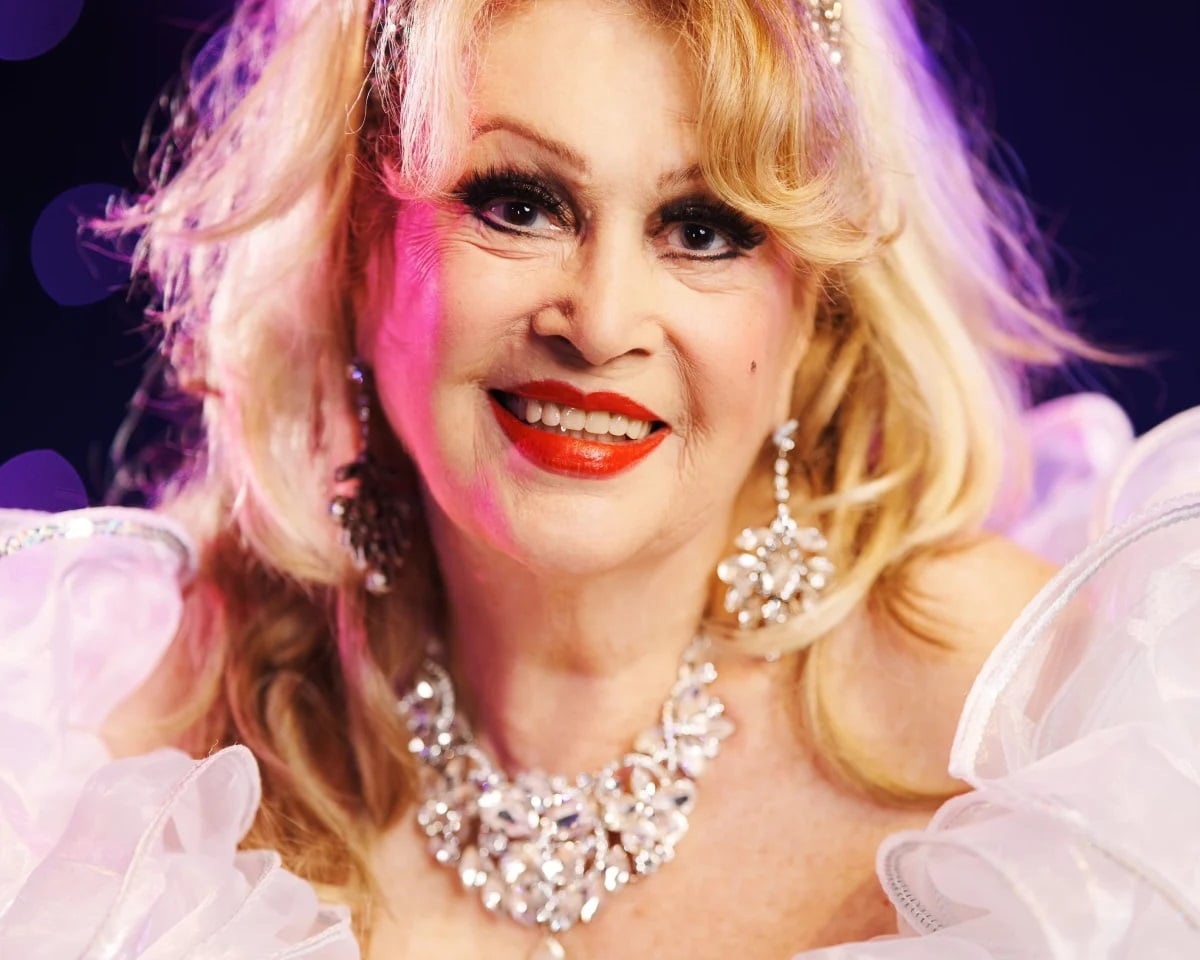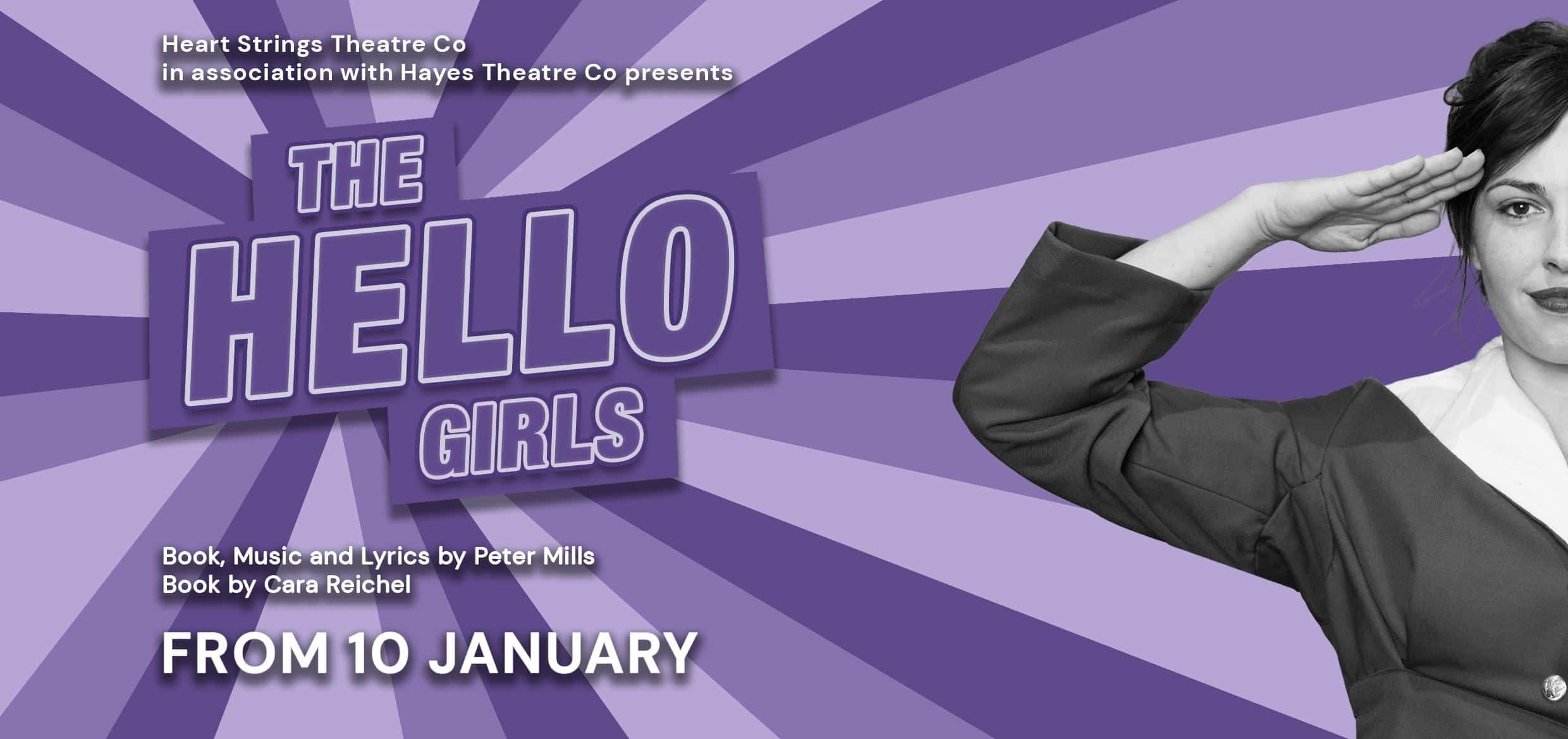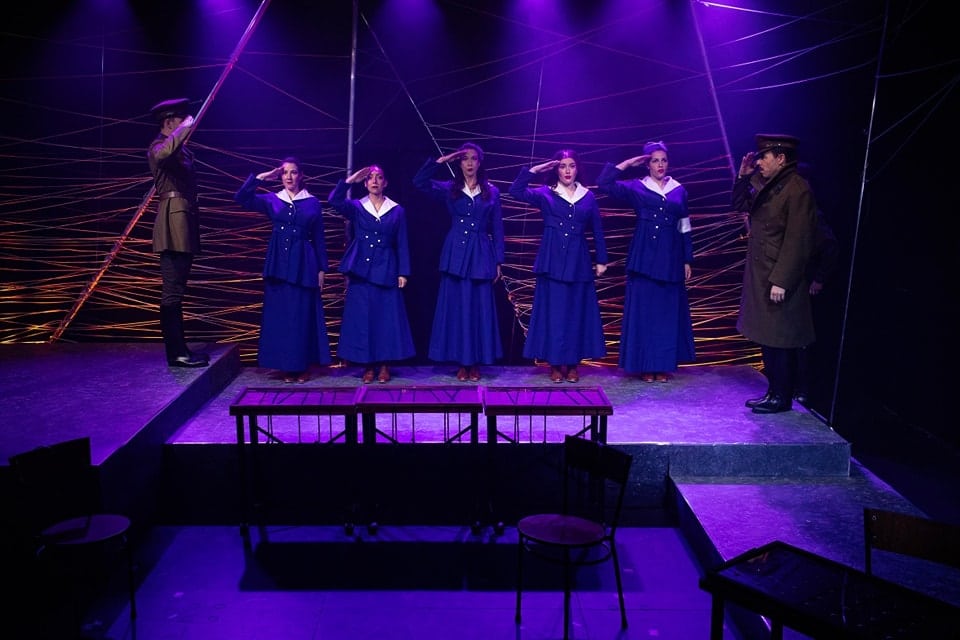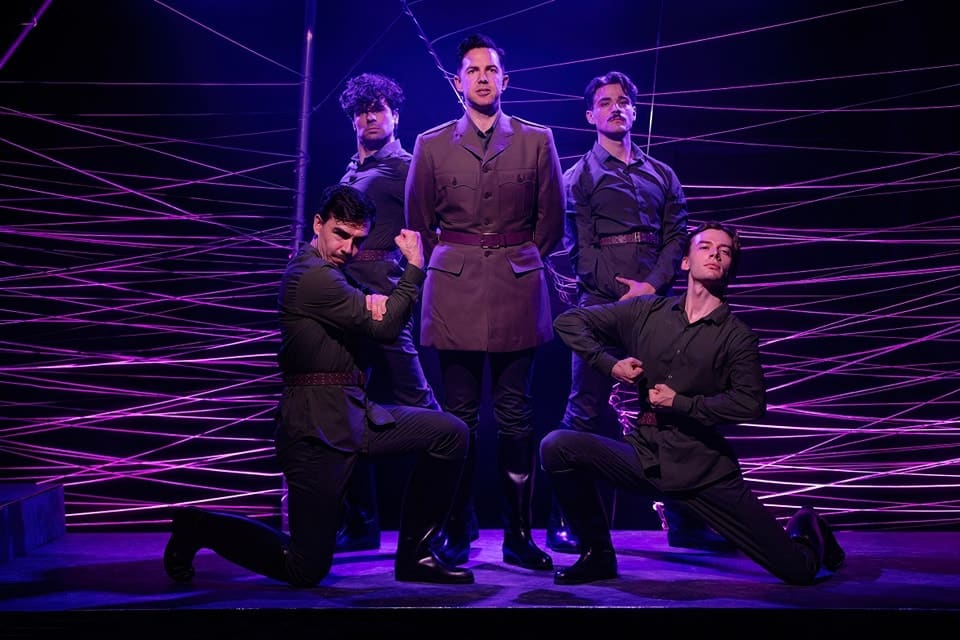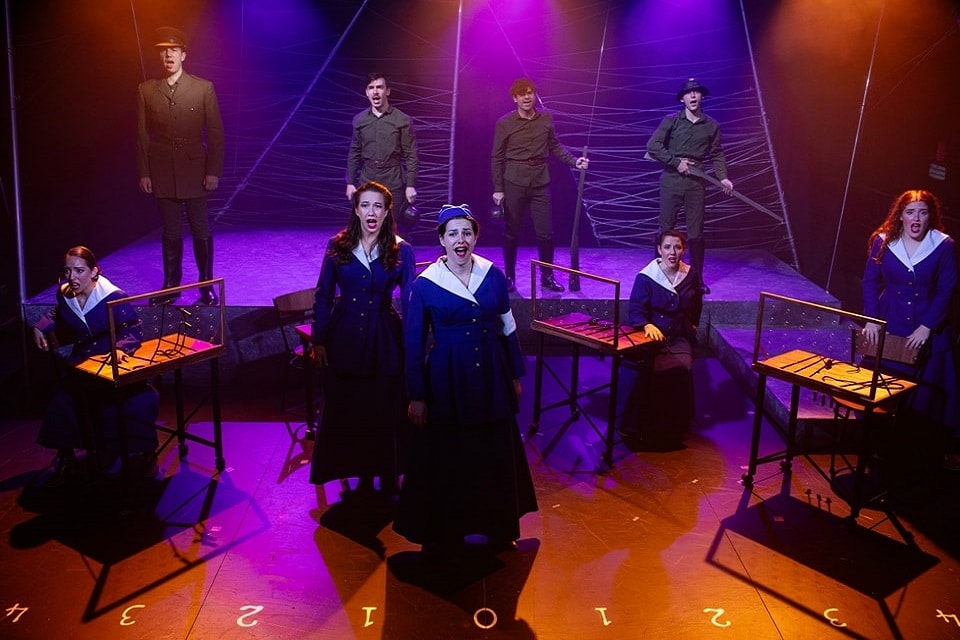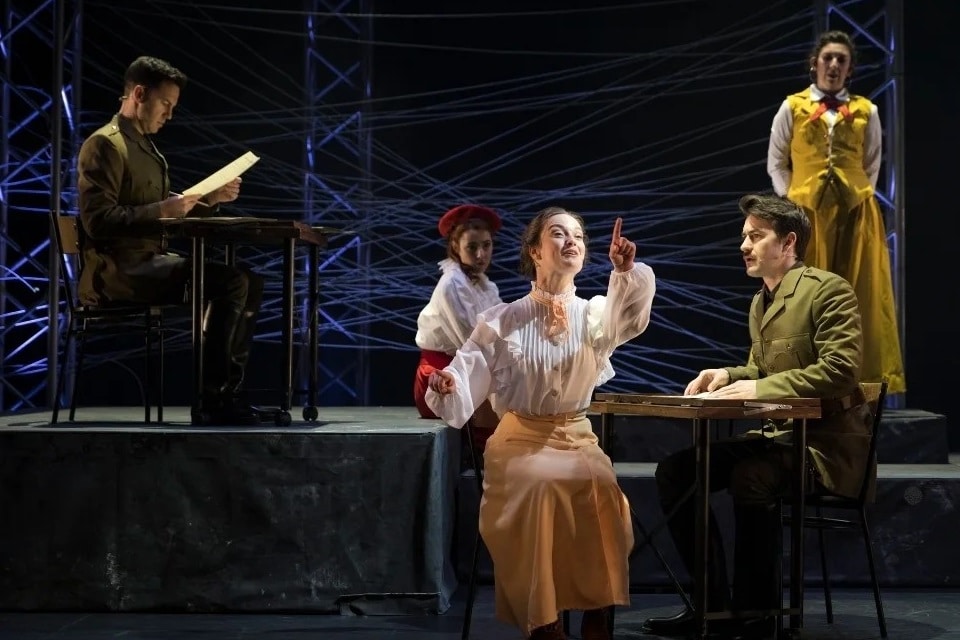Under a sunny and exceptionally warm Autumn Saturday, families with young children arrive at the Pioneer Gardens expecting to see beloved characters from Alice in Wonderland. They were soon introduced to the White Rabbit (Stella Coppola), who bounded amongst the picnic blankets, announcing she was late, late, late!
So begins this outdoor performance in the Pioneer Garden by The Australian Shakespeare Company. It’s always a challenge to entertain children in the younger age bracket, as their attention span can be limited at times. I wondered how the company would capture their attention for the 80-minute show.
It was a clever move to have a “children’s only” space in front of the brightly coloured set; no adults were allowed. This enabled the kids to be a captive audience and, therefore, able to be directly talked to by the characters. The regular encouragement of audience participation engaged the little people, as they were able to yell out answers and sing chants.
The director, Dennis Manahan (also acting in the show as Bill the Lizard and The Mad Hatter), has put together an entertaining show, giving the actors opportunities to explore their character quirks with dancing, singing and merriment. Alice (Madeline Calder) led the storyline. There was clever staging as she encountered the various characters, particularly the huge caterpillar played by Ross Daniels. With various parts of this rather large caterpillar spilling out of different windows, with the head above the roof and the bottom half on the floor, the magnitude of this caterpillar was clearly achieved.
Another imaginative part showed that Alice had grown to giant proportions. Oversized inflatable arms extended from the open windows and flapped around, almost squashing the other characters. This made for a funny scene where the children laughed uncontrollably.
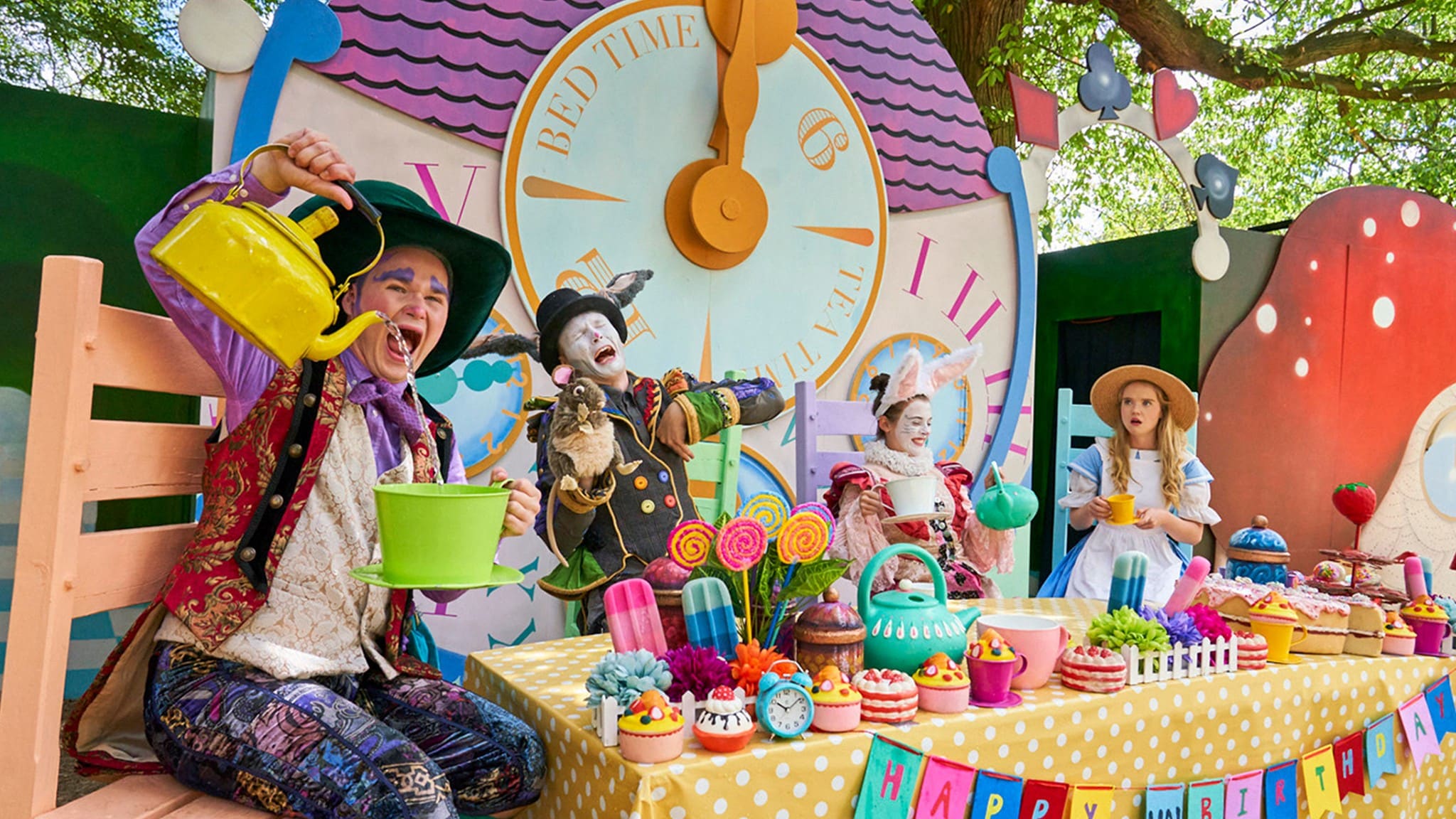
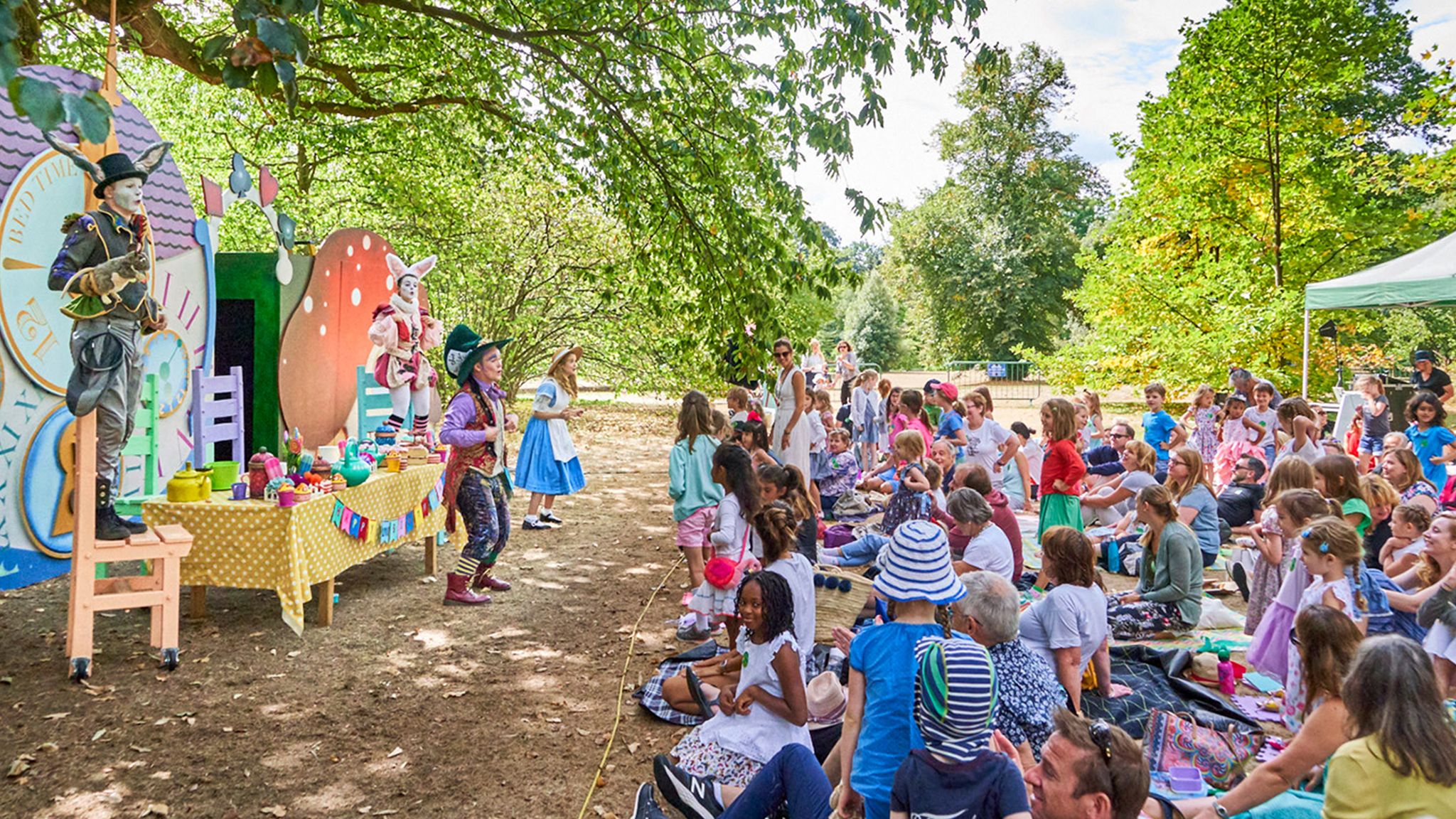
Original songs carried on the storyline, combined with some catchy dancing that added to the light-heartedness of the show. The silliness of Tweedle Dee and Tweedle Dum’s song and dance was very amusing to watch.
The make-up and costumes of all characters were carefully constructed to make them believable. Even Humpty Dumpty made an appearance as a face on a high wall with puppet arms and legs, which I found quite endearing.
The involvement of adults who they asked to be a part of the volunteer ‘card deck march’ would have been a highlight for kids to see. The giant cards slipped over the adults’ heads sandwich board style, which was a clever way to involve the audience in a game on the grass. The caterpillars (the children) entered a caterpillar crawling race, finding their way from the start to the finish line whilst avoiding the card adults’ legs!
At the end of the show, The Mad Hatter invited children to have a cast photo with them. This was a lovely gesture to complete the Alice in Wonderland performance. The Australian Shakespeare Company showcased a lovely afternoon’s entertainment for children and their accompanying adults, which included grandparents as well. Children aged around 3 -5 would love this show.
Alice in Wonderland is playing at The Pioneer Gardens at the Royal Botanical Gardens Sydney from 13 -28 April 2024. Tickets range from $25 in the off-peak period to $30 in peak time. A group of 4 admission tickets are $110. Children under 12 months are admitted free.
